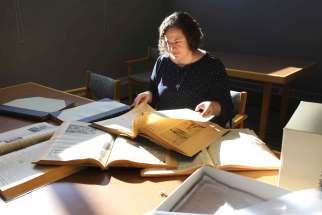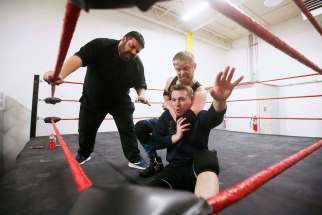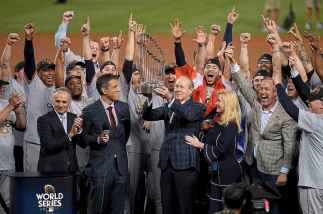All the ring’s a stage Winnipeg thespians find acting skills go hand-in-hand with antics of professional wrestling
Read this article for free:
or
Already have an account? Log in here »
To continue reading, please subscribe:
Monthly Digital Subscription
$0 for the first 4 weeks*
- Enjoy unlimited reading on winnipegfreepress.com
- Read the E-Edition, our digital replica newspaper
- Access News Break, our award-winning app
- Play interactive puzzles
*No charge for 4 weeks then price increases to the regular rate of $19.00 plus GST every four weeks. Offer available to new and qualified returning subscribers only. Cancel any time.
Monthly Digital Subscription
$4.75/week*
- Enjoy unlimited reading on winnipegfreepress.com
- Read the E-Edition, our digital replica newspaper
- Access News Break, our award-winning app
- Play interactive puzzles
*Billed as $19 plus GST every four weeks. Cancel any time.
To continue reading, please subscribe:
Add Free Press access to your Brandon Sun subscription for only an additional
$1 for the first 4 weeks*
*Your next subscription payment will increase by $1.00 and you will be charged $16.99 plus GST for four weeks. After four weeks, your payment will increase to $23.99 plus GST every four weeks.
Read unlimited articles for free today:
or
Already have an account? Log in here »
Hey there, time traveller!
This article was published 14/02/2020 (2125 days ago), so information in it may no longer be current.
Is professional wrestling entertainment or a sport? According to fans and wrestlers alike, it’s both.
For decades, professional wrestlers vehemently denied their sport was fake, but its artifice has become more mainstream, starting with a 1989 acknowledgment by World Wrestling Entertainment owner Vince McMahon in an effort to avoid paying the taxes associated with professional sports.
Acting has always been used by pro wrestlers to convince audiences that ring rivals are in a life-or-death feud with one another. Dwayne (The Rock) Johnson converted his ring presence into being one of Hollywood’s most bankable actors.
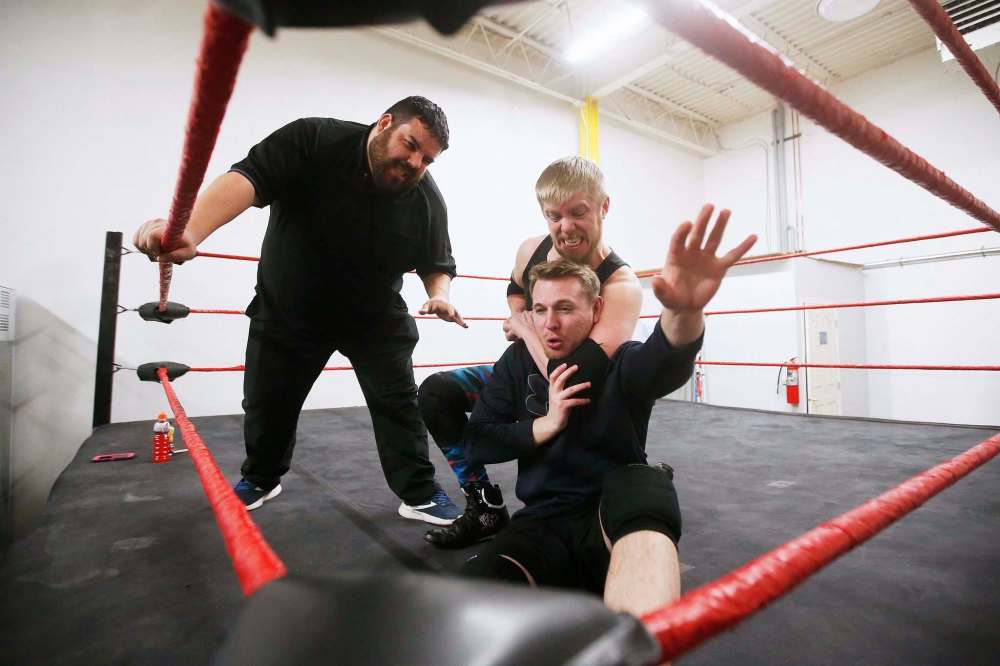
This has caught the attention of some in the Winnipeg theatre community, who are working on their headlocks and body slams — along with their acting chops — to perform on a different stage.
The combination of wrestling and theatre took centre stage during ShakespeareFest As You Like It. The Bard’s famous comedy began with a professional wrestling scene that included actors in tights battling in a wrestling ring that was front and centre at the Royal Manitoba Theatre Centre’s John Hirsch Mainstage.
It doesn’t stop there. George Hudson, an improviser best known for his 11-year stint in the Winnipeg Fringe Theatre Festival hit The DnD Improv Show, trains and works on his wrestling holds two to three times a week at a North End gym with A.J. Sanchez, a professional wrestler whose ring name is The Canadian Crusher.
Hudson got involved in wrestling toward the end of the 2019 fringe, taking his first class at 7:30 p.m. one evening right before a 10:30 p.m. performance.
“I laugh during training when A.J. will be talking about something, using different words than in improv but saying the same things,” says Hudson. “Like ‘accepting your partner’s offer’ is the improv term but ‘selling your opponent’s move’ is the wrestling term.”
Hudson says an important similarity between improv and wrestling is “you have to work together and make each other look good.” He also mentions the importance of applying storytelling techniques to elevate the entertainment experience in both mediums.
“‘Accepting your partner’s offer’ is the improv term but ‘selling your opponent’s move’ is the wrestling term.”–George Hudson
“If I enter the ring and start attacking Chris’s knee,” he says, gesturing to Chris Sousa, a former wrestler turned actor, “later on in the match he might climb to the top of the rope, but then his knee could give way and I could take advantage of that and pull him down.”
Through smartly connected actions and reactions, narratives can be weaved over long periods of time, which pumps up the crowd.
“Chris becomes a target,” says Hudson, “and the audience gets invested.”
Audiences have been pitched — and have bought — countless characters in pro wrestling history. Wrestlers were once loath to break character, even in public.

Since then, wrestling insiders — and professional wrestlers themselves — have been increasingly forthcoming about the theatrical and storytelling techniques that help create the the world of pro wrestling.
“It’s still sort of taboo to talk about the performance art side of wrestling,” says Devin Gray, booker for Winnipeg Pro Wrestling, an organization established in November 2019 to promote independent professional wrestling. “But in recent years, a lot of people have been flipping wrestling on its head.”
This flip involves the overhaul of a wrestling convention known as kayfabe, the portrayal of staged events within wrestling as real — a sportier suspension of disbelief.
While this convention used to be strictly upheld, thanks to the internet and social media, it has become challenged by both wrestlers, including by wrestlers here in Winnipeg, where superstars such as Chris Jericho, Kenny Omega and the late Rowdy Roddy Piper began their careers.
Gray says there are “probably 12 full-time wrestlers in Winnipeg” but adds it’s not an easy gig,
Opportunities are scarce. Wrestlers rely heavily on self-promotion and touring to make ends meet; he compares the lifestyle to those led by standup comedians or musicians.
Sanchez, who began wrestling in 2002, credits his childhood love of wrestling and his early competitive successes as two major reasons the pastime stuck with him.
“In wrestling, you always hear that the best characters are characters that are you as a person, with the volume turned all the way up.”–A.J. Sanchez
Then there’s the indescribable feeling of being in the ring, no different than the one an actor, singer or comedian gets from being on a stage.
“It’s tough to explain the feeling you get when you’re in front of a crowd,” Sanchez says. “All the attention is on you. Everyone is looking at you and reacting to you.”
While many wrestlers have a specific character, Sanchez’s persona is a heightened version of himself.
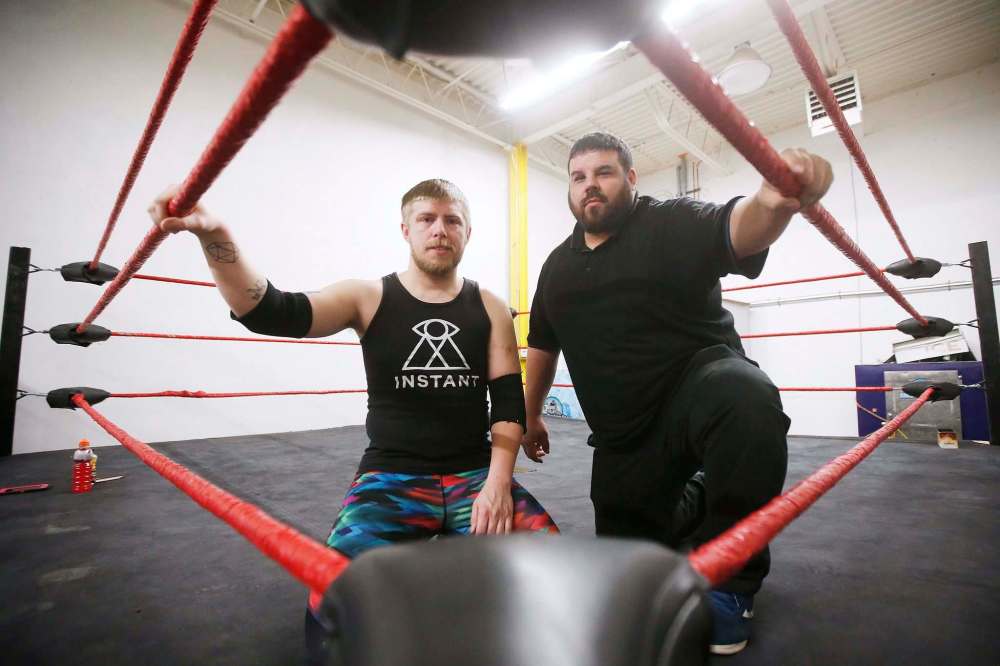
“In wrestling, you always hear that the best characters are characters that are you as a person, with the volume turned all the way up,” he says.
“It’s very physical, but what makes it so much more interesting is the storytelling.”
Sanchez has wrestled across Canada, the United States and Mexico and cites his quick wit and ability to get under his opponent’s skin as his main tactics.
Hudson’s training partner, Sousa, got his start in wrestling after graduating high school but had to leave his dreams behind when he suffered an injury while training. Soon after, he discovered a passion and talent for acting, and is currently on tour with Prairie Theatre Exchange’s production of The Paper Bag Princess.
For him, wrestling and acting have a lot in common.
“Wrestling is improvised dance,” he says. “Wrestlers communicate with each other what they want they next sequence of moves to be. Wrestlers who are very seasoned can make those connections almost without speaking because they have worked together so much, so it’s very much like theatre when acting with a scene partner you know well.
“Wrestling for me is storytelling. The best wrestlers can tell a story from start to finish without saying a word.”
Writer and filmmaker Sonya Ballantyne agrees.
“Wrestling is what really influences my writing,” says Ballantyne, who is in her early 30s. “All of my favourite tropes come from wrestling. I love underdog stories, I love overcoming things and I love spectacle.
“As a girl and as a native person, there weren’t very many girls that wrestled when I was a kid,” says Ballantyne, who is from Misipawistik Cree Nation and grew up watching professional wrestling with her family. She always dreamed of becoming a wrestler, but felt it wasn’t possible.
“Being a girl and being too tall and being the wrong colour to be a wrestler was heartbreaking,” she says. “It was just another way I couldn’t do what I wanted with my life. I really hated that part.”

“Wrestling for me is storytelling. The best wrestlers can tell a story from start to finish without saying a word.” –Chris Sousa
Instead, Ballantyne used her talent for writing to create work inspired by pro wrestling, and penned a screenplay called WWShe, about a group of teenage girls who start a professional wrestling promotion on their reserve.
Though there are more female professional wrestlers today than when Ballantyne was a kid, diversity remains a challenge. “But it’s a lot more progressive,” she says. “It’s a lot better now than it was then.”
This increase in representation and diversity often comes from wrestling promoters and bookers, those who arrange the bouts. As is increasingly the norm in the arts, professional wrestling prioritizes the importance of safe spaces for the wrestlers and the audience.
“We have rules against cat-calling, homophobic and racist chants,” says Gray. “We have house rules and my phone number is posted if there are ever any issues. We want it to be a very welcoming and safe environment.”
Winnipeg Pro Wrestling’s next promotion, Look Who’s Wrestling Now!, takes place March 19 at 8 p.m. at the West End Cultural Centre. Tickets are $20 and are available at wpgprowrestling.com.
Frances.Koncan@freepress.mb.ca
Twitter: @franceskoncan

Frances Koncan (she/her) is a writer, theatre director, and failed musician of mixed Anishinaabe and Slovene descent. Originally from Couchiching First Nation, she is now based in Treaty 1 Territory right here in Winnipeg, Manitoba.
Our newsroom depends on a growing audience of readers to power our journalism. If you are not a paid reader, please consider becoming a subscriber.
Our newsroom depends on its audience of readers to power our journalism. Thank you for your support.






